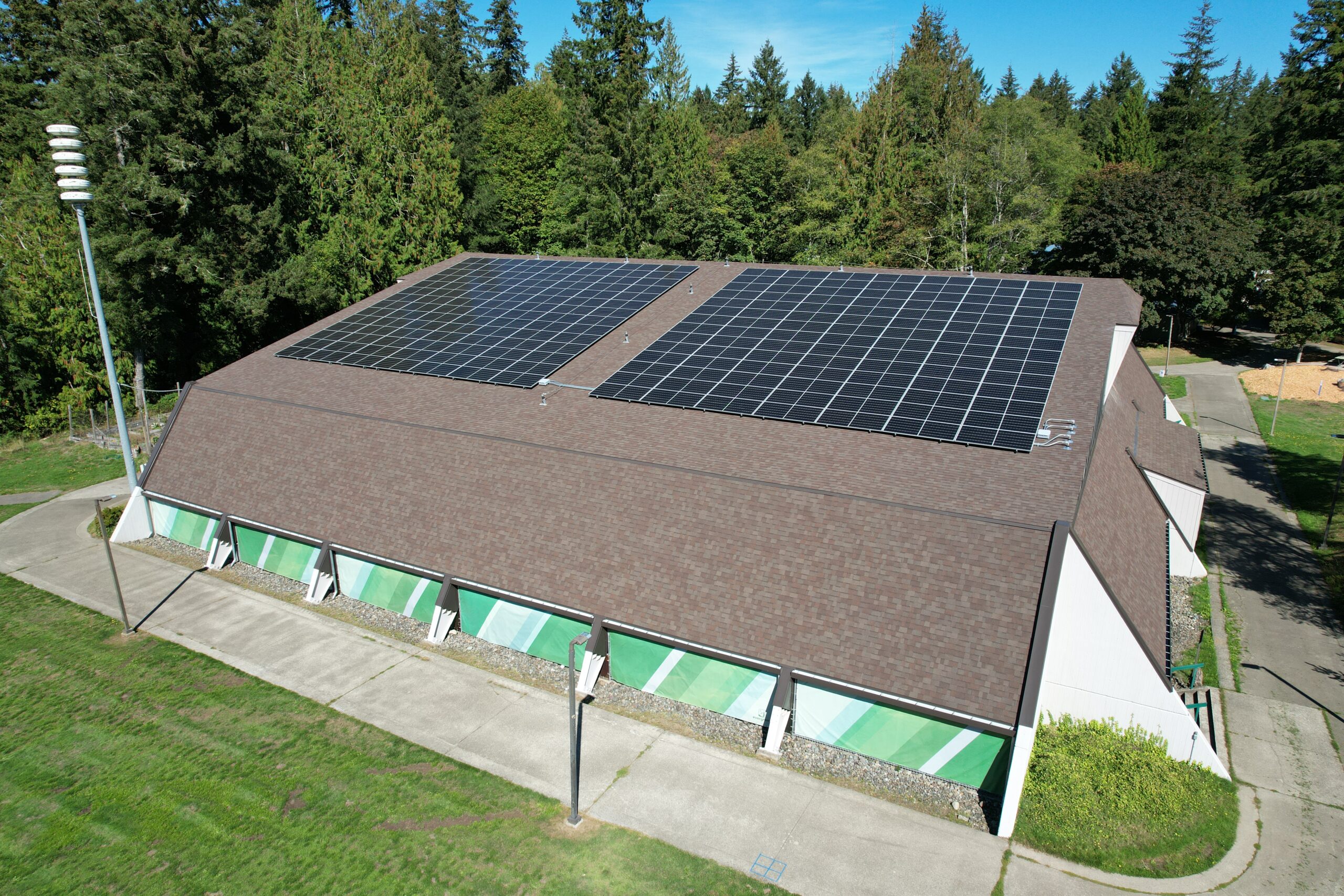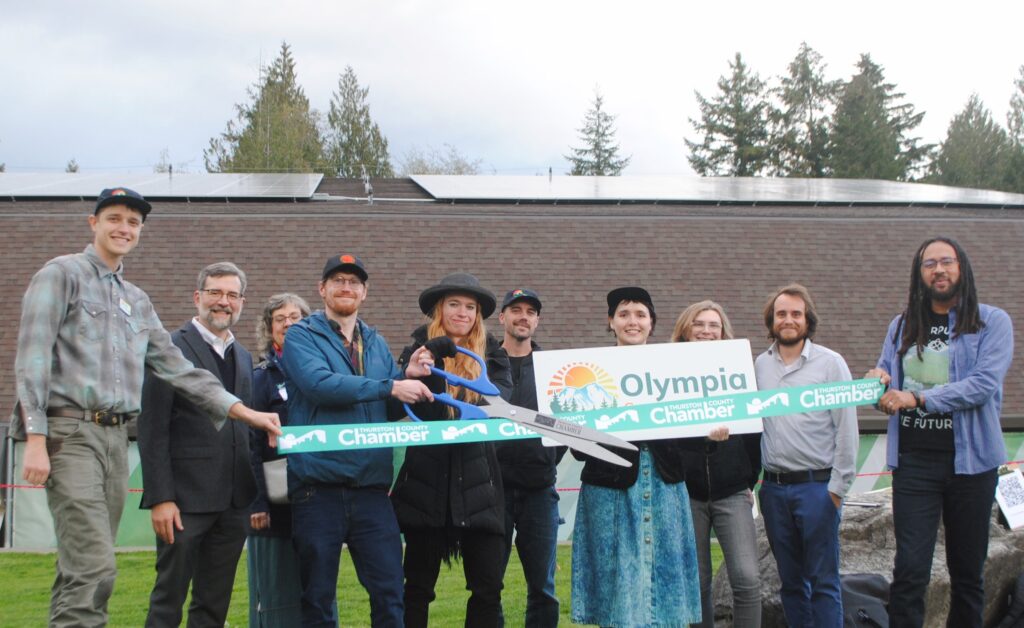
On October 29th The Evergreen State College and Olympia Community Solar hosted a ribbon cutting ceremony to mark the completion of the Thunderdome Solar Project!
Students at Evergreen have long envisioned a solar energy powered campus. Several student projects over the years have led to solar installations on the Daniel J. Evans Hall, the modular housing, and the Evergreen Tacoma campus. In 2016 a pair of undergraduates furthered a faculty question to assess and design a solar array installation. However with higher costs and the recent purchase of a new building, they saw an opportunity to pivot and bring the first Clean Energy Committee funded project to the Tacoma campus, and the largest Evergreen solar project at the time. These students, Matthew Strickland and Matt Booth went on to graduate the following year, archiving their ideas with the hope that a future generation would take on.
Seven years later, in 2023, a group of dedicated students unearthed the original plans with the Office of Sustainability and led this effort to successfully fund the largest solar project in the College’s history. MES Graduate students Emma Wright and Keira Jensen worked with a local nonprofit, Olympia Community Solar, to assess the feasibility of installing solar on the Covered Recreation Pavilion. They found that the Pavilion was recently re-roofed, has excellent solar exposure, the roof is visible to the public, and could support a significant solar installation.
The project team worked collaboratively to draft an application to the Clean Energy Committee in May 2023. The Clean Energy Committee is a student-led group that manages income from the Clean Energy Fund, a voluntary fee students can pay into with their tuition. The original purpose of the fund was to offset Evergreen’s electricity consumption with emission offsets, and it’s done so successfully for almost 20 years. Over time the cost of emission offsets has decreased, so extra funding is allocated to fund student projects on campus.
The Clean Energy Committee approved the application, awarding about $264,000 to fund the solar installation, Evergreen’s staff time, and educational programming. The project team secured support from the college’s Space and Land Use Group, and the project was assigned to Project Manager Marshall Urist.
Marshall issued a Request For Proposal to attract solar installation contractors, and selected Mad Energy NW to perform the installation. The system was completed and a ribbon cutting took place on October 29th, 2024.
The electricity from the project will save about $13,000 in energy costs the first year! Over the approximately 25 year lifespan of the project, The Evergreen State College will receive at least $440,000 in energy benefits. Savings from the solar will directly benefit the college by making more resources available for student support and services. The solar energy will reduce the Evergreen’s carbon footprint by 88 thousand pounds of CO2 emissions, equivalent to planting 723 trees every year, or not driving 111,000 miles.





